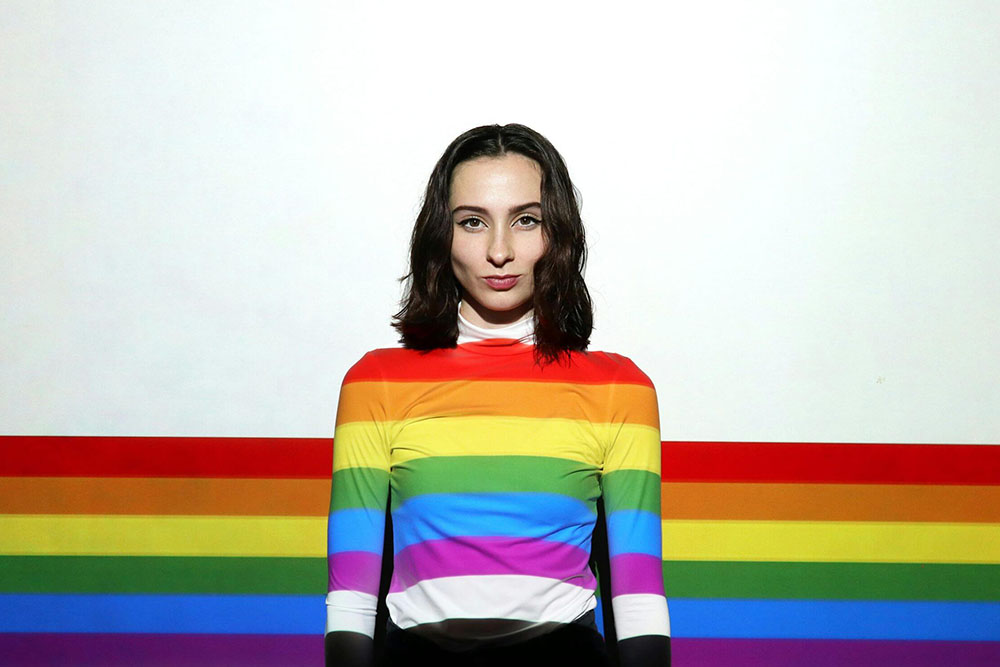Happy Pride Month!
In June, we take extra care to celebrate those of us who identify as members of the LGBTQIA+ community. I am here to share a piece of my story that I hope will leave some readers feeling a little more seen than ever before. I’ll be inviting you into my world, where I live at the unique (and at times confusing) intersection of BPD and Asexuality—a sexual orientation defined as experiencing little to no sexual attraction.
I am Asexual. I am Aromantic. I am Agender.*
But at 18, I didn’t have the language to articulate or label these experiences quite yet. So there I was, a recent high school graduate, making my way through another treatment program when I had a very different label thrown at me: borderline personality disorder.
As you may be aware, there are a lot of stereotypes associated with BPD. At the time that I was diagnosed ten years ago, it was almost expected that, from a rather early age, someone with BPD would be serially dating to fill the vast emotional void characteristic to this condition, and persistently fighting to find themselves in other people. Similarly, it seemed that interpretations of BPD criteria held an uncomfortably strong emphasis on the engagement in unsafe sexual behavior as a highly potential trait.
I recognize that this perception was my experience—no doubt exacerbated by the fact I was young and female-presenting at the time—and, perhaps, it’s not yours. But from Reddit threads and television shows to seasoned psychiatrists and bona fide experts, it appeared that if risky sex and fraught romantic partnerships (let alone romantic or sexual relationships of any kind) wasn’t lockstep with your experience of emotion dysregulation and feelings of emptiness, questions and suspicion followed. Even if I wasn’t being directly confronted with “Hmm…that doesn’t sound like BPD,” it was always in the air.
I’m not suggesting that there is anything inherently wrong with these experiences, nor would I ever intend to alienate anyone who has had them. Not at all. What I am saying is that it was painful to constantly have my identity and the validity of my diagnosis questioned simply by nature of not having those experiences myself.
Growing up a sex-repulsed* aroace in my teen years, I had no idea what to make of this. Even years after my diagnosis, my identity as an asexual often made it incredibly difficult to simultaneously identify with BPD—or, more aptly, the version of BPD I saw in other people and had been made to believe was more “real.”
Of course, this experience is naturally nuanced and individual, as there are quite literally hundreds of potential trait combinations (and therefore presentations) of BPD. But to a certain extent, there is an underlying theme that is expressed in most lived experience with BPD on a more overarching level. And part of that theme always included the presence of—and struggle in—these kinds of relationships. As such, I often felt a lack of connection to other folks who shared the diagnosis.
In fairness, so much of BPD is about our relationships—both to ourselves and to others. Unfortunately, the term relationship in our society has been co-opted and is colloquially used to mean romantic or sexual…unless otherwise specified. And it was this pattern of discourse centering only these types of relationships that carried into conversations in therapeutic spaces in my journey to treat and recover from BPD that left me feeling wronged in some way. Because, in my personal lived experience, true romantic and/or sexual attraction is basically fiction. So this lack of representation, acknowledgment, or care for the types of relationships I do experience and value in the context of being and healing, was incredibly disheartening.
But in giving myself time, and the space to self-reflect, I was eventually able to reach a point of reconciliation. I understand now how these identities and experiences co-exist in me, just as I understand how I can be both autistic and have BPD. But the thing is, I had to do it on my own, and that shouldn’t have happened. No doubt, this interplay between BPD and Asexuality is complex and may challenge how you think about the variety of ways in which our diagnosis can present, but it’s definitely “a thing”.
And if you didn’t know, now you do.
About the Author: Jennifer is a recent MSW graduate and licensed social worker with lived experience of borderline personality disorder. She donates her time to the Lived Experience Committee because through advocacy we find that representation matters, human connection saves lives, and recovery is possible.
*If these terms are new to you, I encourage you to do a little research—even a cursory understanding would be helpful in most contexts. Unfortunately, there is not the time or space to elaborate here.


Hi Jame,
Thanks for taking the time to comment!
Unfortunately, I don’t personally know of any resources that speak to this particular intersection of identities/diagnoses – hence the reason I wrote this post 🙂
I can, however, recommend a couple of great resources on some of these topics individually, if that’s of any help to you.
Check out the following:
Asexuality – Ace Dad Advice (multiple social media platforms), Yasmin Benoit (Instagram), The Ace and Aro Advocacy Project (https://taaap.org/).
Autism – @autistic_callum_, @neurodivergent_lou, @mattlowrylpp (Instagram); Sonny Jane / Lived Experience Educator (FB & Insta).
BPD – NEABPD, Emotions Matters, @catherinelcsw (Insta).
And feel free to stay tuned for more of my thoughts seen on future blogs about living as an aroace, autistic with BPD. Thanks for reading!
– Jennifer
This really struck a lot of notes for me. I have BPD and I do believe I am autistic. My therapist said “maybe” but I can’t unmask fully yet. I wonder if I’m asexual but It’s confusing. How do I read more? lol